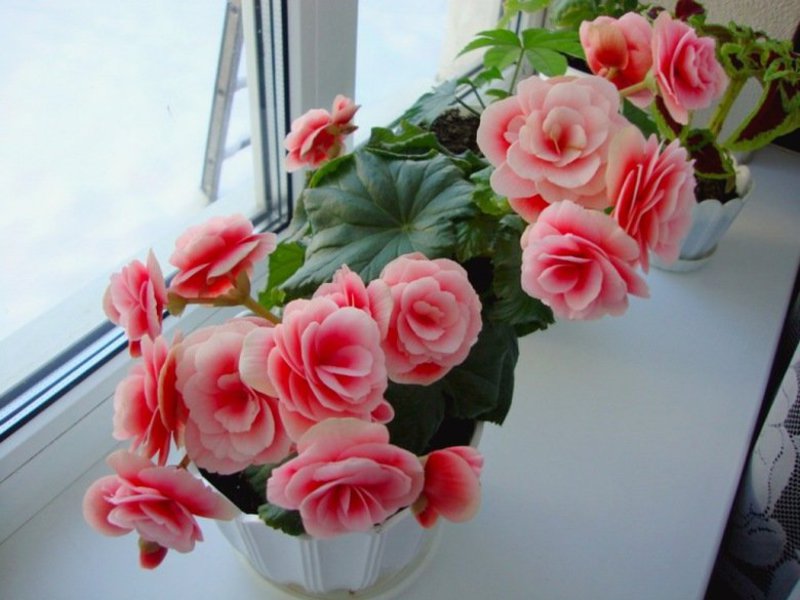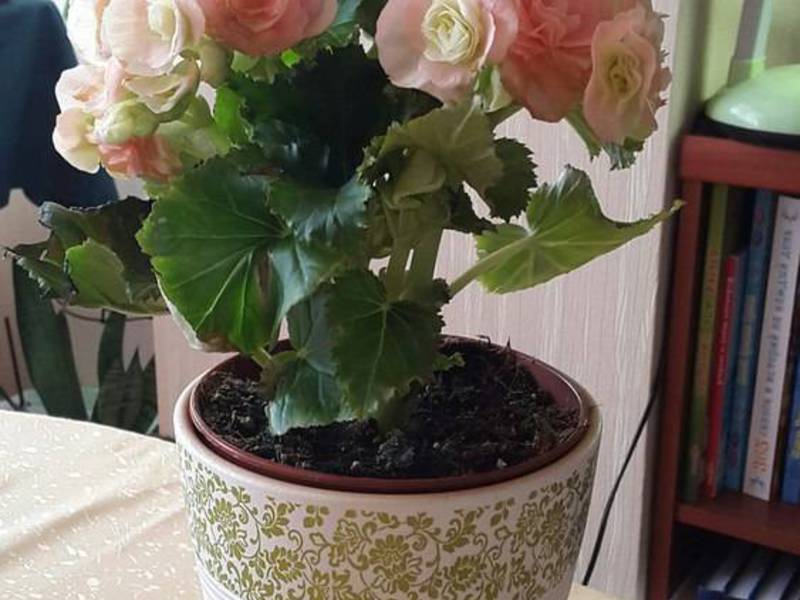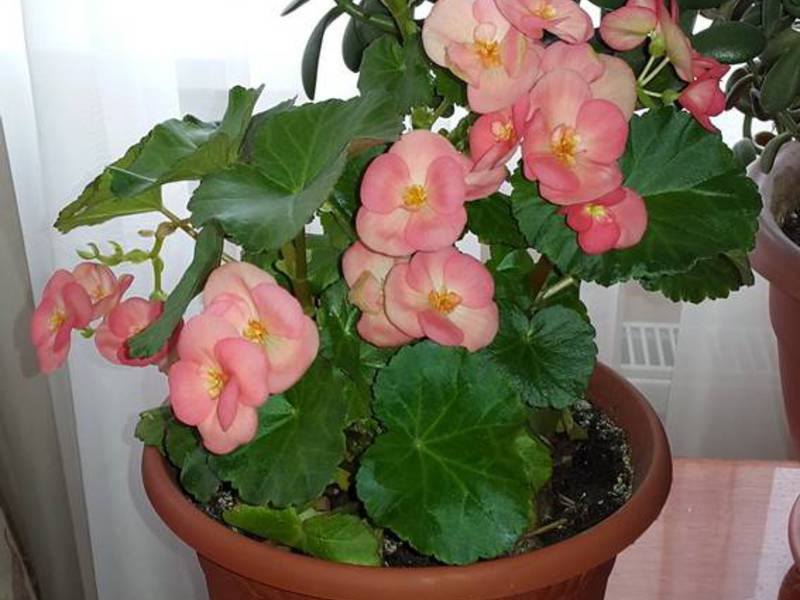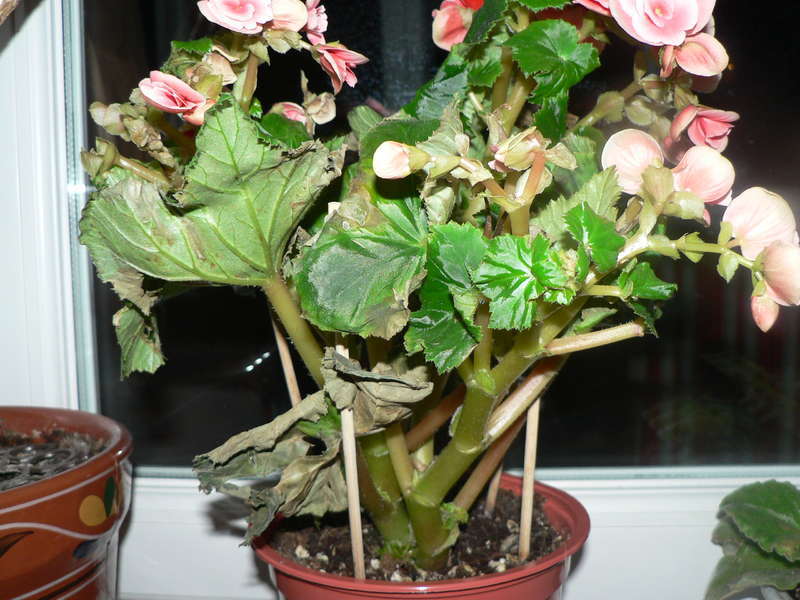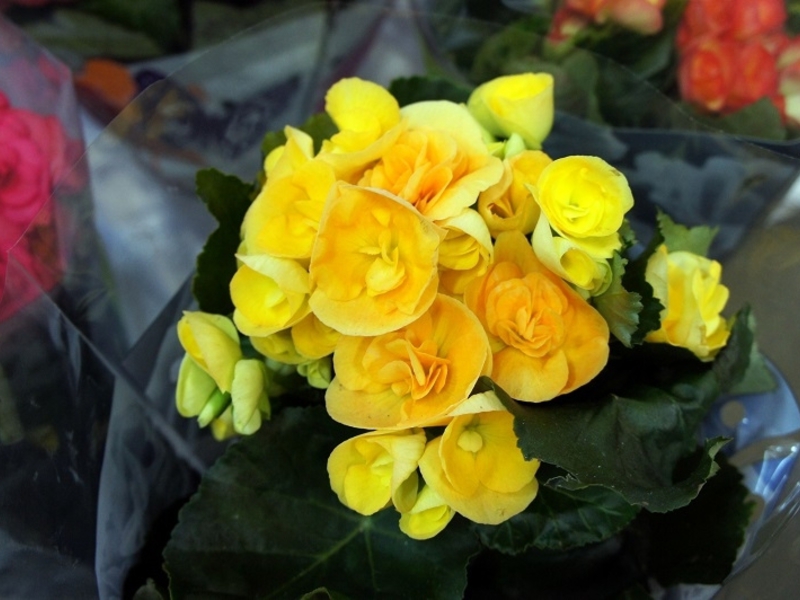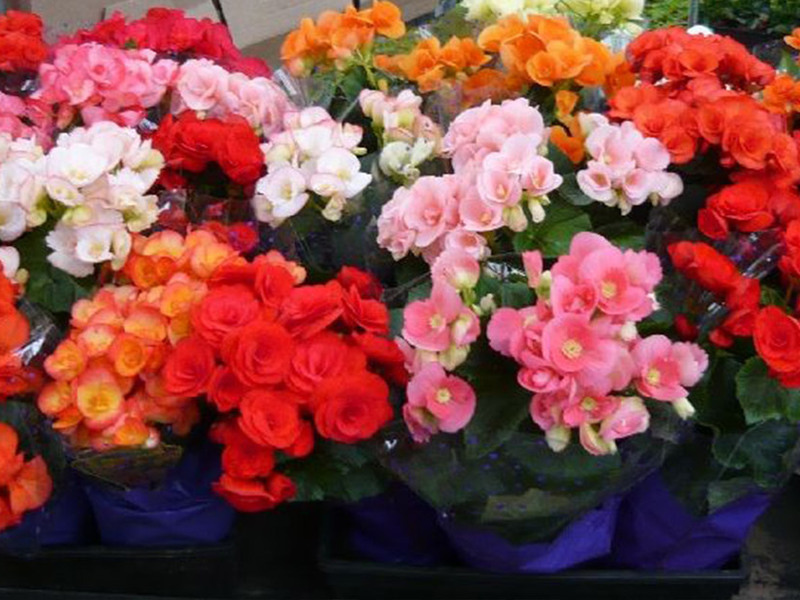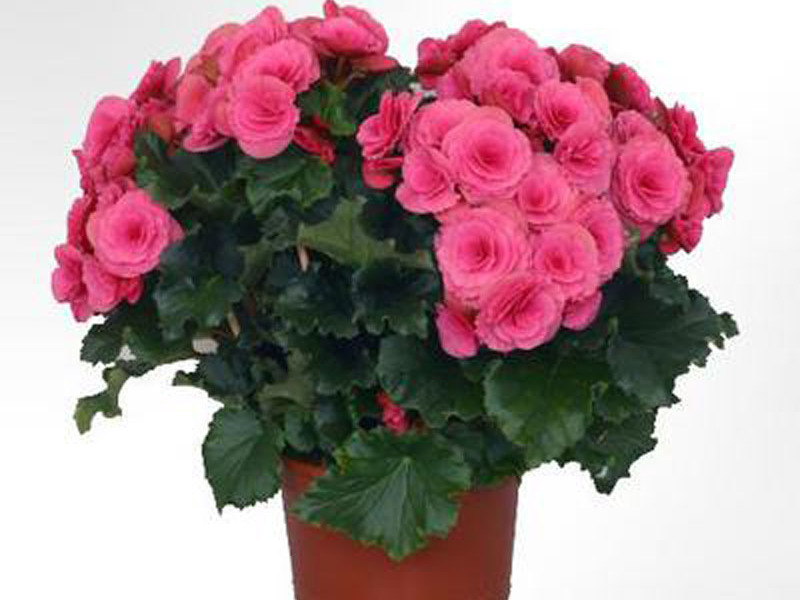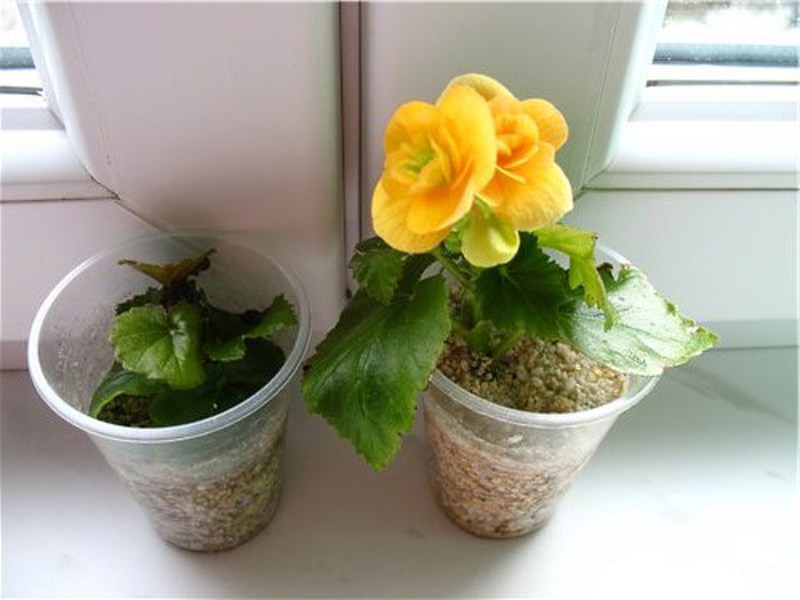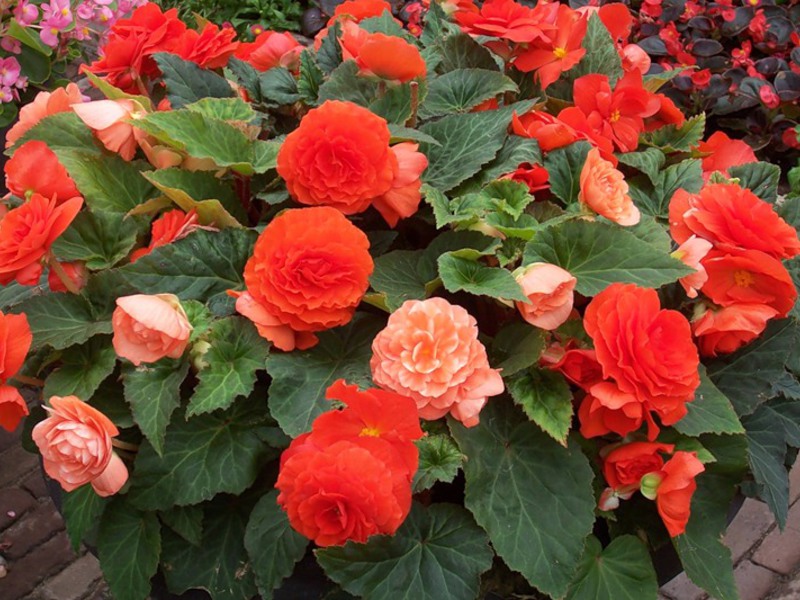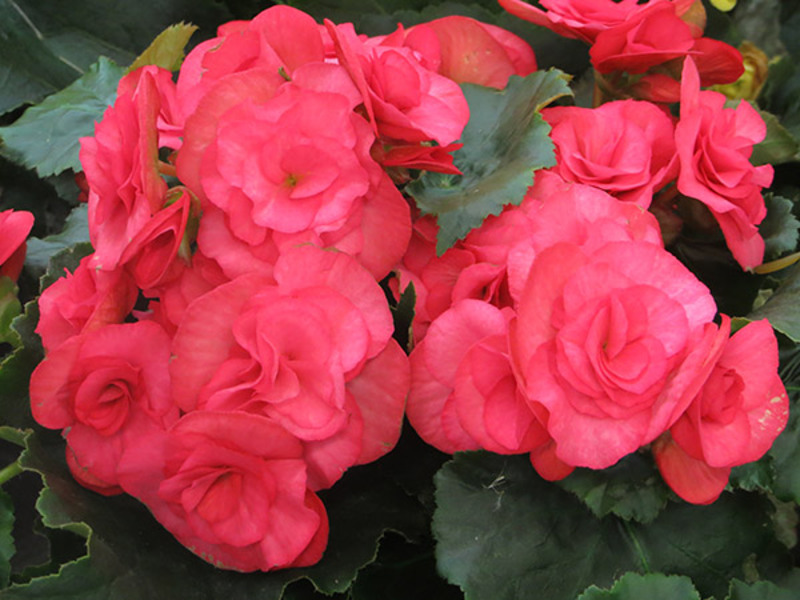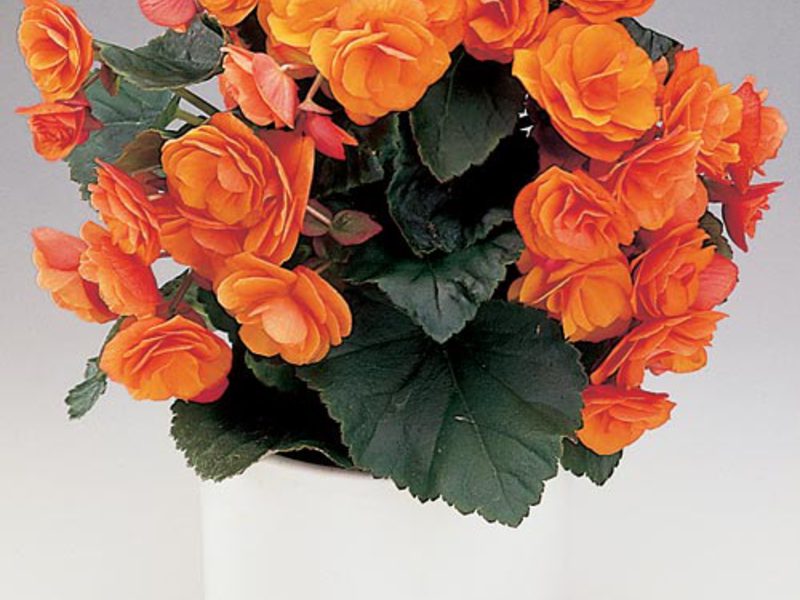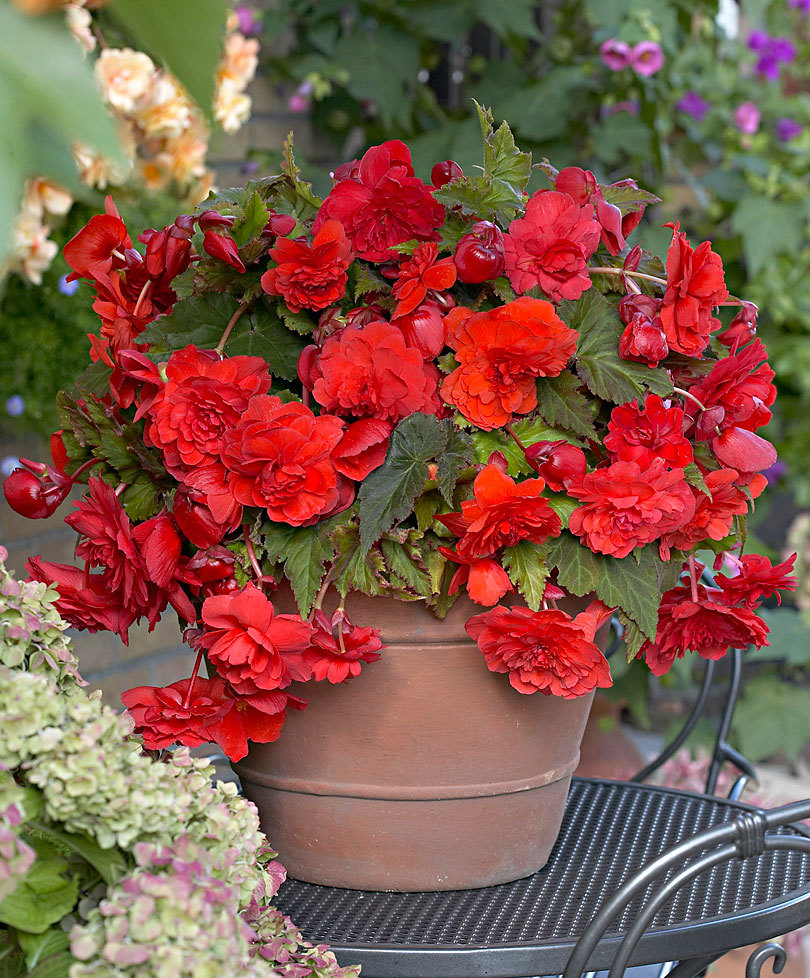Bright and graceful flowers of Elatior begonia look amazingly impressive against the background of glossy green leaves. This crossbred hybrid is the most favorite and widespread of these flowers. It differs from other species in its special splendor, beauty and flowering twice a year. When grown at home, it is unpretentious, but caring for it has its own nuances.
Content
Description, varieties and photos of Elatior begonias
Flowering shrub reaches a height of 40 cm and distinguished by fleshy stems... The dense and long leaves of begonia are rich green on top and light green underneath. They are shaped like an asymmetrical heart. There are pronounced veins located below the leaf plate. A serrated edge runs along the edges of the leaves.
Flowers, depending on the variety, can have a wide variety of colors. Reaching 5 cm in diameter, they form inflorescences that grow on long peduncles from the leaf axils.
All types of this hybrid are divided into tall, medium-sized and low-growing. The most famous and popular are two types of plants.
Varieties of begonias that require special care:https://flowers.bigbadmole.com/en/komnatnye-rasteniya/begoniya/vidy-komnatnyh-begoniy.html
Baladin
The flower is distinguished by abundant flowering and multi-tiered peduncles up to 30 cm high. Up to about seventy flowers can bloom on one bush of this kind of begonias. Blooming in all shades of pink, white and bright red flowers, the plant is popularly called "a bouquet in a pot" and is often presented instead of bouquets for the holidays.
Borias
The hybrid bred in England is especially popular among flower growers. The plant is compact in shape and has long flowering, shiny leaves and simple or double flowers. Located on multi-tiered peduncles, pale pink flowers have a white edging. Due to its lush flowering, a hybrid of this species is widely used to decorate not only apartments, but also offices.
Home care and cultivation
The plant requires special attention, as this delicate flower is very susceptible to poor conditions and stressful situations.
Lighting
Begonia Elatior likes good lighting, but it should be protected from direct sunlight. Best suited for growing it are windows on the west and east sides. The plant located on the southern windowsill will bloom profusely, but in small flowers. From the excess of the sun, terry varieties will reduce the number of petals and become pale.
The hybrid belongs to plants with a short daylight hours, so it does not need additional lighting in winter.
Temperature and humidity
 For ideal growth and long-lasting flowering, the plant must be kept in a warm room with a temperature within 18-20C... In cooler temperatures, it will stop growing and shed its buds.Growing a hybrid at low temperatures for a long time will lead to a disease of the plant with stem or root rot. That is why drafts and temperature drops are contraindicated for the flower.
For ideal growth and long-lasting flowering, the plant must be kept in a warm room with a temperature within 18-20C... In cooler temperatures, it will stop growing and shed its buds.Growing a hybrid at low temperatures for a long time will lead to a disease of the plant with stem or root rot. That is why drafts and temperature drops are contraindicated for the flower.
The plant is demanding on air humidity, but it is not recommended to spray it. To increase the humidity of the air around the flower, the pot can be placed on a tray filled with damp expanded clay, peat or moss.
How to propagate begonia - flower propagation methods:https://flowers.bigbadmole.com/en/komnatnye-rasteniya/begoniya/kak-razmnozhat-begoniyu-sposoby-razmnozheniya-cvetka.html
Watering and feeding
Begonia Elatior need to water sparingly and only after the earthen lump dries up to half. The water in the pot and the pan should not stagnate, otherwise the flower stems will begin to rot. Therefore, it is better to underfill the flower than to overflow.
Top dressing is carried out very carefully. You can only use special mineral complex fertilizers for this. It is not recommended to feed the plant with organic matter, since the abundance of organic nitrogen makes the petioles and stems watery, transparent and brittle. Flowering after feeding with organic fertilizers becomes scarce, and the flowers themselves do not look so impressive.
Transplant features
Is different delicate and small rootstherefore grows well in small pots. The soil for it must be chosen loose and nutritious. It should retain moisture well, but, at the same time, dry well. For transplanting Elatior, you can prepare an earthen mixture yourself, taking for this in equal parts:
- peat land;
- greenhouse humus;
- leaf humus.
Coarse river sand must be added to the soil, vermiculite or perlite.
An adult plant does not tolerate a transplant, so it is better to leave it to grow in a transport pot. Most often sold in flower shops as a disposable bouquet. Therefore, immediately after purchase, cuttings are cut and rooted from the bush.
Reproduction
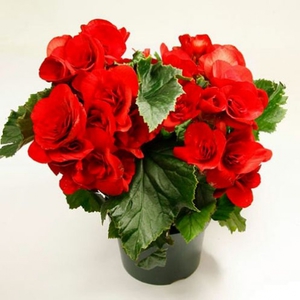 There are three ways to propagate a plant:
There are three ways to propagate a plant:
- Seeds.
- By dividing the mother bush.
- By cuttings.
Reproduction by seeds - the process is very painstaking... It is almost impossible to collect seed material from a flower, since all its varieties are hybrids.
The simplest and most common way to propagate begonias is by cuttings. To do this, in spring or summer, mature leafy cuttings are selected or stems are cut.
In order for the planting material to be resistant to the effects of bacterial and fungal microorganisms, the petioles for rooting are placed in sphagnum, perlite or vermiculite. You can also root them in water, in which you will need to put a piece of coal. Cuttings from the stem should be about seven centimeters long.
The container with the planted cuttings is placed in a dark place. After about two months, the shoots should begin to germinate. At this time, they will need to be placed in a well-lit place.
When caring for young plants, it is recommended to regularly do a bush-forming pinch. To maintain strength and appearance, faded and withered inflorescences and flowers should be promptly removed.
Possible growing problems
An under-cared plant starts to hurt and may die... The reasons for this may be:
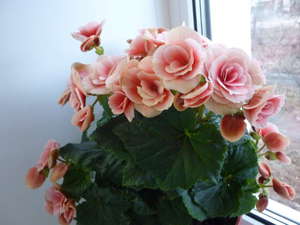 Low air humidity and poor watering leads to the fact that the flower begins to shed its foliage.
Low air humidity and poor watering leads to the fact that the flower begins to shed its foliage.- Increased humidity when keeping a flower in a cool room provokes the appearance of mold on buddons. In this case, they must be removed, and the bush must be treated with fungicides.
- With insufficient lighting, the leaves turn pale and lose their decorative effect.
- Spider mites or aphids can attack begonia at home. If there are still few pests, then the ground part of the plant must be sprayed with soapy water several times. Otherwise, it is recommended to use "Intavir" or "Karbofos".
- The ideal conditions for the development of powdery mildew on the plant are sudden temperature changes and too dry indoor air.The first sign of the disease is the appearance of white bloom on the leaves and stems. The affected bush is treated with sulfur or fungicides.
In order for a green pet to please you with its healthy appearance and decorativeness, it needs ensure the correct conditions of detention and optimal care.
What you need to grow ever flowering begonia:https://flowers.bigbadmole.com/en/komnatnye-rasteniya/begoniya/begoniya-vechnocvetuschaya-kak-proizvesti-vyraschivanie-iz-semyan.html
Florist reviews
For a very long time I wanted to decorate my yellow kitchen with a flowering plant. I bought Elatior begonia and put it in a yellow pot. The flower blooming for the third month already fits perfectly into the interior. However, in the first few days, several buds fell off it. On the forum, I read that this is due to a change in the place of the plant. A week later, new buds appeared, and those that did not disappear blossomed. Begonia Elatior can be grown for asthmatics and allergy sufferers, since it does not emit any odors.
Once, on March 8, I was presented not with a standard bouquet, but with the Elatior begonia blooming with orange flowers. I water the flower sparingly and he stands practically in a draft... But nothing - it grows and blooms. For better flowering, I sometimes feed. Two years have passed since the begonia first appeared in my home. During this time, I propagated it with leaves, but the old bush still blooms. It stands on my north side. Sometimes I remove dry and old branches from it. I didn’t even expect that with minimal care it would turn out to be so long-lasting.
For some reason, as a child, I didn't like begonias. Compared to roses, these flowers did not seem very beautiful to me. Now I am happy to grow them on my huge glazed balcony. For decorating a loggia or balcony, begonia is perfect. I put her in not very deep boxes, I exhibit and enjoy blooming and lush greenery from spring to autumn. Caring for her is minimal, and the pleasure is the sea. From the street, my balcony looks just gorgeous!
Victoria
